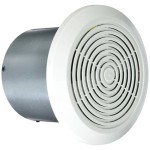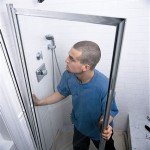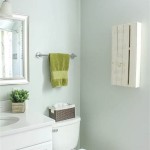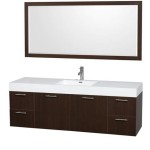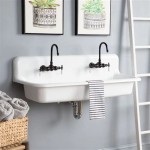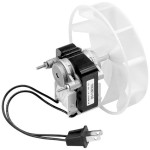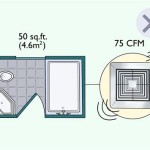How to Waterproof a Bathroom Floor
Protecting your bathroom floor from water damage is essential for maintaining the integrity and aesthetics of your home. Waterproofing a bathroom floor involves creating a barrier between the subfloor and the finished floor surface to prevent water from seeping through and causing costly issues.
Materials Required
* Waterproofing membrane (e.g., liquid membrane, sheet membrane) * Primer * Trowel * Roller * Sealant * Caulk gunStep 1: Prepare the Surface
* Remove all fixtures, appliances, and flooring from the bathroom. * Clean the subfloor thoroughly to remove any dirt, debris, or old adhesive. * Allow the subfloor to dry completely before proceeding.Step 2: Apply Primer
* Apply a thin coat of primer to the entire subfloor surface, ensuring an even distribution. * The primer helps to create a bond between the waterproofing membrane and the subfloor. * Allow the primer to dry according to the manufacturer's instructions.Step 3: Install Waterproofing Membrane (Liquid Membrane)
* Pour the liquid membrane into a clean bucket or roller tray. * Using a trowel, spread the liquid membrane evenly over the subfloor, starting from the corners and working toward the center. * Roll out the membrane with a roller to ensure a smooth, even surface. * Allow the liquid membrane to cure completely according to the manufacturer's instructions.Step 4: Install Waterproofing Membrane (Sheet Membrane)
* Cut the sheet membrane to size, ensuring that it extends up the walls at least 6 inches. * Remove the release paper from the bottom of the membrane. * Press the membrane into place, starting at the corners and working toward the center. * Use a trowel to smooth out any wrinkles or overlaps. * Seal the seams and overlaps with the appropriate sealant.Step 5: Install Flooring
* Once the waterproofing membrane is completely dry and sealed, you can install your desired flooring. * Ensure that the flooring is installed according to the manufacturer's instructions.Step 6: Seal Edges
* Apply a bead of sealant around the perimeter of the floor where it meets the walls. * Use a caulking gun to spread the sealant evenly. * Smooth out the sealant with your finger or a damp sponge.Maintenance
* Inspect your bathroom floor regularly for any signs of damage or wear. * Clean the floor regularly with mild, non-abrasive cleaning products. * Reapply sealant around the edges of the floor as needed.Benefits of Waterproof Flooring
* Protects against water damage * Prevents mold and mildew growth * Increases the longevity of the flooring * Enhances the aesthetic appeal of the bathroom * Adds value to your homeConclusion
Waterproofing your bathroom floor is a crucial step in maintaining the integrity and aesthetics of your home. By following the steps outlined in this article, you can effectively create a waterproof barrier that protects your subfloor and flooring from water damage. Remember, proper maintenance is essential to ensure the long-term effectiveness of your waterproofing system.
7 Best Ways To Waterproof Your Bathroom Keyvendors

The Complete Guide To Waterproofing Your Bathroom Floor Cce L News

How To Waterproof A Bathroom Floor
Bathroom Waterproofing How To Waterproof A N Standards Architecture Design

How To Waterproof A Tile Shower Art Renovation

Things To Know About Bathroom Waterproofing Megasealed
Bathroom Waterproofing How To Waterproof A N Standards Architecture Design

Do I Waterproof The Entire Bathroom Or Shower Recess

Bathroom Waterproofing Area That Needs Extra Protection Asian Paints

How To Waterproof A Tile Shower Art Renovation
